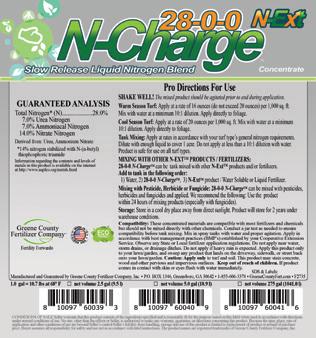




















































































































There are certain days every year that I can expect to hear from people with some encouragement. Those days include my birthday, Christmas, the anniversary of a health scare from a few years back, and most impor tantly… the FIRST FROST. You know you’re a turf nerd if you have friends that text you every first frost just like it’s Christmas morning! In 2022, this wonderful day came unseasonably early, but you certainly won’t be hearing me complain!
For turfgrass managers in warm season grass country, our first killing freeze ushers in our “off-season”. Off season. What exactly does that mean? I don’t know about all of you, but I’m still at work before anyone else in my neighbor hood has their lights on. I still have a budget to make, bills to pay, and mouths to feed. I still have customers that call with things they need help with and employee problems to handle. I still have equipment that needs maintained, and I can’t even begin to imagine the winter project lists of you golf course superintendents. Yes, I look forward to winter. We need a small reprieve from the intense grind of the growing season. But…there is no offseason for a turfgrass manager. However, I personally always look forward to that small drop in intensity that winter brings!
Since our work is somewhat seasonal, winter affords more time for things like professional development, interaction with colleagues, and educational opportuni ties. I strongly encourage you to attend the 2023 Arkansas Turfgrass Association conference and experience all of these things in one venue. We have a great confer ence planned with engaging speakers, extremely relevant topics, pesticide recertifi cation opportunities, hands on workshops available, and we all know that the golf course guys show up just for the free happy hour at the Embassy Suites!
We are providing two FREE workshops at the 2023 conference. As I write this letter in October, we do not know the exact topics. However, we know that one will be taught by new university professor Wendell Hutchens in the area of his expertise—turfgrass disease. This will be a hands-on learning opportunity that would cost hundreds of dollars if taken outside of this conference. It’s a really great opportunity for those of us that need or want a little extra help identifying turfgrass diseases and knowing how to manage them. This workshop alone is well worth the conference registration. Make plans to attend.
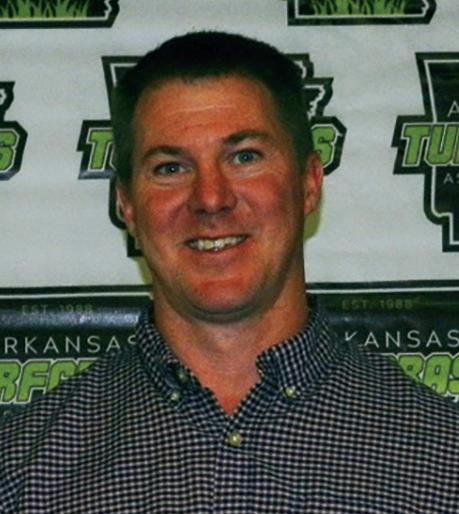
I also wanted to take a minute to thank our sponsors for the conference. The ATA exists to bring you opportunities for education and professional development. We absolutely could not put on this conference without the support of our spon sors and the vendors at the trade show. Please take time to personally thank each of these sponsors at the conference. We can’t thank you enough.
Josh Landreth ATA Vice PresidentArkansas Turfgrass Association P.O. Box 1862 • Lowell, AR 72745 Tel: 479-301-5534
Published by: Leading Edge Communications, LLC 206 Bridge Street, Suite 200 Franklin, TN 37064 Tel: 615-790-3718 Email: info@leadingedge communications.com
ATA
Richard
Kyle
Courtney Landreth
Pat
Charlie
Daniel
Seth
Daniel


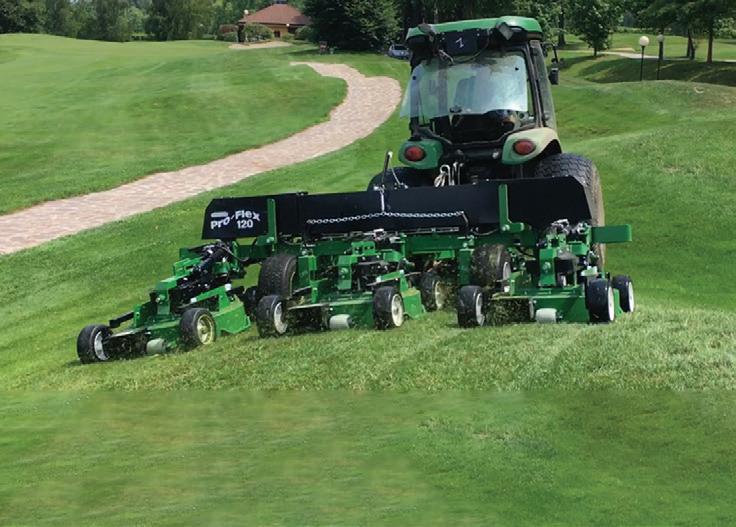






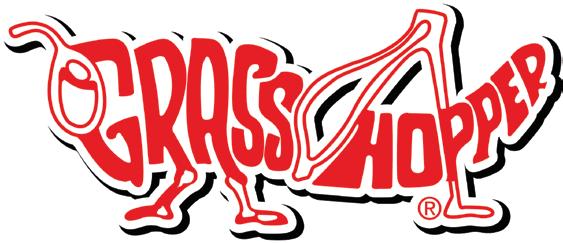




Thursday, January 26, 2023 – (Moderator: Josh Landreth)
Start Finish Description Speaker Topic Title
7:30 AM 8:30 AM Trade Show / Breakfast
8:30 AM 9:00 AM Welcome to 2022 ATA Josh Landreth & Kyle Sanders Welcome, Announcements & Awards
9:00 AM 9:30 AM Update from AR Dept. Ag Seth Dunlap
9:30 AM 10:00 AM Session 1 Hannah Wright
AR Pesticide Regulations Update
Pesticide stewardship & application safety
10:00 AM 11:00 AM Break / Visit Trade Show
11:00 AM 11:30 AM Session 2 Wendell Hutchens Scouting / IPM
11:30 AM 12:00 PM Session 3 Jason Davis Calibration 12:00 PM 1:30 PM Lunch (on your own) & Visit Trade Show
1:30 PM 2:30 PM Session 4 Tyler Carr Pesticide / Fertilizer Math
2:30 PM 3:00 PM Session 5 Michael Lee Products being taken out of market / Advocacy
3:00 PM 3:30 PM Break / Visit Trade Show
3:30 PM 4:45 PM Workshop 1 Wendell Hutchens
Turfgrass diseases & control
General Updates & Reminders
Safety & Stewardship: The Keys to our Survival
Cutting Edge Turf Technologies: A New Way to Scout for and Manage Turfgrass Diseases
Back to the Basics: Turfgrass Math
Cultural and Chemical Management of the Most Common and Problematic Turfgrass Diseases in Arkansas
3:30 PM 4:45 PM Workshop 2 Hannah Wright Weed ID Weeds 101
Friday, January 27, 2023 – Golf Session – (Moderator: Wendell Hutchens)
Start Finish Description Speaker Topic Title
8:30 AM 8:55 AM Welcome / Announcements (Coffee & donuts)
9:00 AM 9:45 AM Golf Session 1 Jordan Booth Regional / transition zone perspective golf course issues
10:00 AM 10:45 AM Golf Session 2 Jeff Steen Superintendent’s perspective on labor, internships, recruiting
11:00 AM 11:45 AM Golf Session 3 Chase Straw Precision irrigation / turf management
Precision Turfgrass Management: Current Trends & Future Applications
Start Finish Description Speaker Topic Title 8:30 AM 8:55 AM Welcome / Announcements (Coffee & donuts)
9:00 AM 9:45 AM Lawncare Session 1 Mike Richardson Big ideas
10:00 AM 10:45 AM Lawncare Session 2 Tyler Carr Fertility / soil testing
11:00 AM 11:45 AM Lawncare Session 3 Garry McDonald
Ornamentals mainte nance calendar / BMPs
Sponsored by: Intimidator Group
Sponsored by: ASGA
Sponsored
Hannah Wright)
Building a Fertilizer Program for Lawns
Start Finish Description Speaker Topic Title 8:30 AM 8:55 AM Welcome / Announcements (Coffee & donuts)
9:00 AM 9:45 AM
Sports Turf Session 1 Chase Straw
Precision sports turf management
10:00 AM 10:45 AM Sports Turf Session 2 Zach Severns Infield skin maintenance / Baum
11:00 AM 11:45 AM Sports Turf Session 3 Cody McKee
SFMA Chapter for Arkansas
Sports Field Variability and it’s Impact on Athlete-Surface Interactions
Sponsored by: Ewing Irrigation & Landscape Supply
Sponsored by: Envu
The statements and opinions expressed herein are those of the individual authors and do not necessarily represent the views of the Arkansas Turfgrass Association, its staff, or its board of directors, Arkansas Turf grass, or its editors. Likewise, the appear ance of advertisers, or their identification as Arkansas Turfgrass Association mem bers, does not constitute an endorsement of the products or services featured in this, past or subsequent issues of this quarterly publication. Copyright © 2022 by the Ar kansas Turfgrass Association. Arkansas Turf grass is published quarterly. Subscriptions are complimentary to members of the Ar kansas Turfgrass Association. Third-class postage is paid at Jefferson City, MO. Print ed in the U.S.A. We are not responsible for unsolicited freelance manuscripts and photographs. Contact the managing editor for contribution information.






This is THE Sponsorship that gets your company the most recognition.
You will receive feature recognition on the ATA homepage and all related conference materials as Title Sponsor for the event. Your name / logo will appear on all signage and event program.
$1,000 Workshop Sponsor ( ONE MORE SPONSORSHIP AVAILABLE )
Our workshops are popular sessions that appeal to a broad range of turf professionals.
By becoming a workshop sponsor, your company logo will appear on all signage, attendee brochure, conference program, and on the ATA website as conference sponsor.
Includes ONE conference registration with access to all education sessions.
Choose between Recertification, Lawn, Golf, or Sports Turf Sessions Our education sessions set the bar high and provide education from nationally renowned experts. Please consider showing your support. As an Education Sponsor, your company logo will appear on the screen for the given education session and will be recognized at the beginning of session by the mediator.
Includes THREE Conference registrations with access to all education sessions. $250 General Event Sponsor ( UNLIMITED SPONSORSHIPS AVAILABLE )
Your company logo will appear on all signage, conference program, and on the ATA website as conference sponsor.
Includes TWO conference registrations with access to all education sessions.
We host two break stations (one on the trade show floor and one in the education concourse). Let attendees know you support their industry with your full color logo on the Snack/Break Sponsor sign.
Your logo will appear with all other sponsors on the event page and you will be credited as an event sponsor during the event and on the ATA website.
Company logo will also appear on the attendee brochure / conference program as a sponsor.
Your logo will appear with all other sponsors on the conference program and on the ATA website as a sponsor.
“This is an exciting day for everyone involved in the research and develop ment of this new St. Augustinegrass cultivar. I am hopeful both growers and consumers appreciate Sola for its many improved characteristics and overall turf quality,” Milla-Lewis said.
Sola is the second cultivar to be released from Milla-Lewis’ breeding program within the past year. Lobo™ Zoysiagrass was released in Novem ber 2021. Select NC sod producers, turfgrass research, development and marketing company Sod Solutions and the North Carolina Sod Producers As sociation (NC SPA) helped support the development of these grasses by team ing up to form Turf Research North Carolina (TRNC) in 2016. Growers made financial contributions over a six-year period to fund the research and development of Lobo, Sola, and other turfgrasses yet to come out of the program. All NC SPA participating growers contributing to the program will have exclusive access to the grasses when they are released. Sola St. Augus tine will be exclusively licensed through Sod Solutions for commercial produc tion and marketing.
“This is a monumental day for the turfgrass industry. Dr. Milla-Lewis and her team have put in years of research and hard work towards this new St. Augustinegrass cultivar. We are thrilled to be a part of this process and cannot wait to see the success of Sola in the marketplace for years to come,” said Sod Solutions President Tobey Wagner.
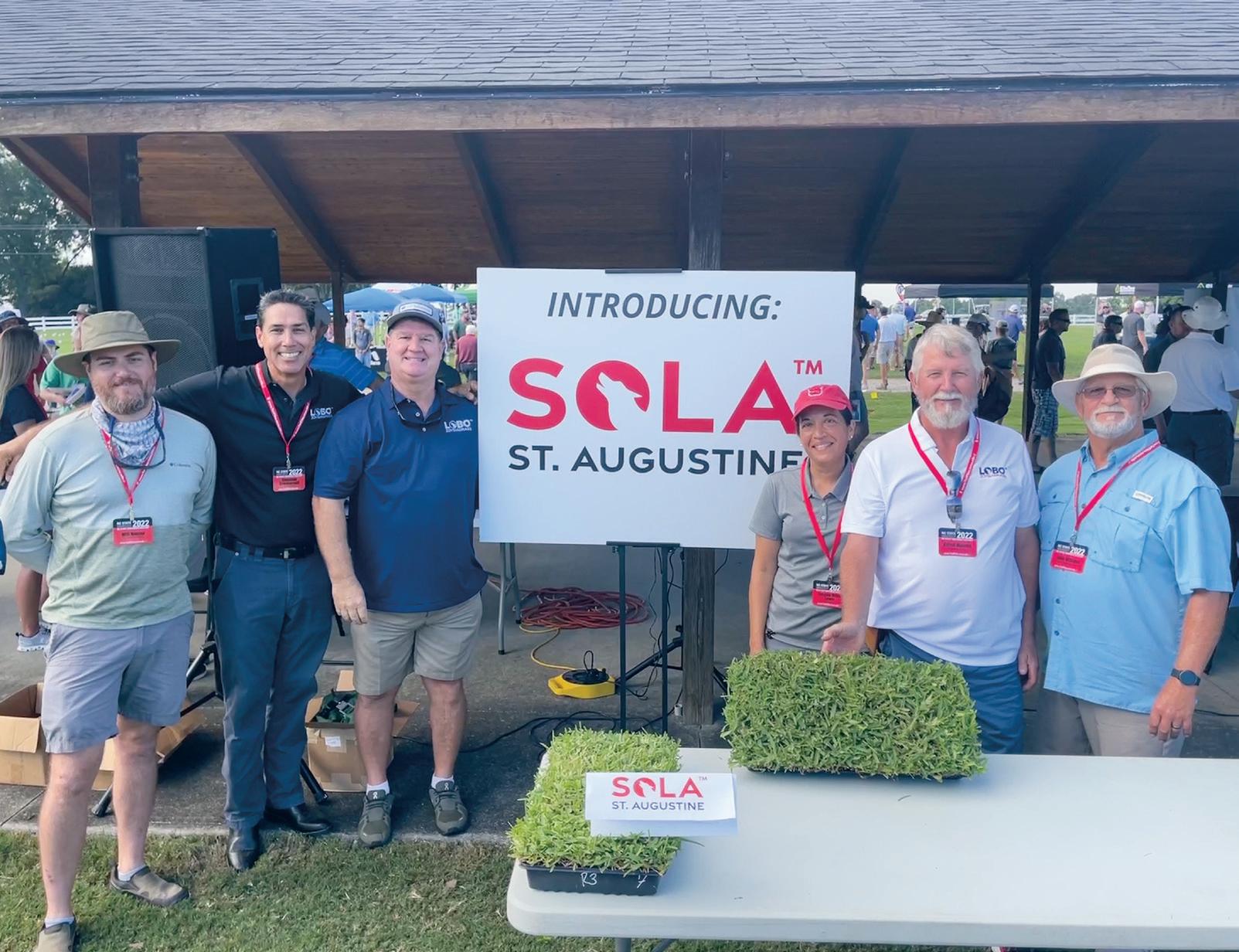
The objective of the breeding pro gram was to release an improved St. Augustinegrass cultivar better than Raleigh St. Augustine.
“When the turfgrass breeding program was established in 2009, Raleigh was the only turfgrass cul tivar NC State had released going back to the early 1980s. And despite it being old, it was still an important commercial cultivar that is widely grown” Milla-Lewis shared.
She said that Sola is comparable to Raleigh in cold hardiness but has many characteristics in which it out performs Raleigh, Palmetto and oth er St. Augustinegrass cultivars such as turf quality and density, shade tolerance, disease resistance, drought tolerance, aggressive growth and ex ceptional recovery.

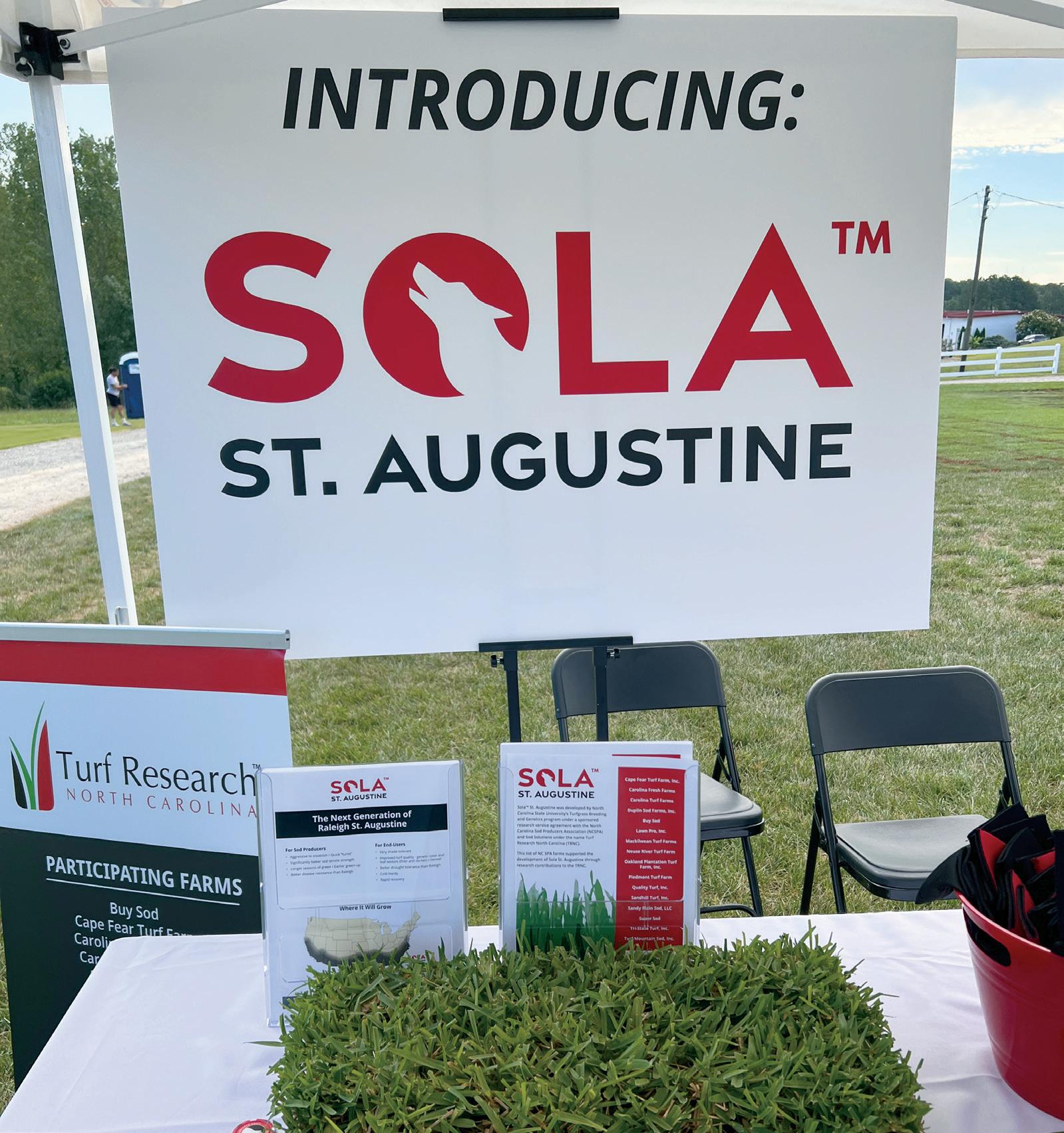

“We set out to develop some thing that would beat Raleigh and it’s exciting that it outperforms it in so many different ways,” Milla-Lewis said. “As the breeder, one thing I’m most excited about is that I think this grass is going to make producers very happy because it is very aggressive to establish and regrow, and the sod quality is great.”
Milla-Lewis anticipates the south ern portion of the transition zone corridor will be one of the first areas where Sola will expand. She is eager to observe if this new cultivar will replace older St. Augustinegrasses throughout these regions over time.
Milla-Lewis reflected on her first presentations to the NC SPA back in 2009 and how the sod producers kept their faith in her as a new turf grass breeder. “For the past 12 years, through many meetings and field days, I would show the program’s progress and promise something would come out of our work. Now here we are, with two new cultivars released,” she said. “They have been so supportive and incredibly patient. I am incredibly thankful to the NC SPA growers and the TRNC.”
Up next for NC State’s Turfgrass Breeding and Genetics program will be a new centipedegrass cultivar. Promising lines are currently in the last stages of testing in on-farm trials at Mackilwean Turf Farm, Quality Turf and at the Lake Wheeler Turf grass Field Laboratory. Following an improved centipede cultivar, MillaLewis anticipates promising lines of St. Augustinegrasses, Zoysiagrasses and possibly fescues will be released from the program. But for now, the release and expansion of Sola is a top priority.
Asinflation continues to rise, managers are starting to face an additional workforce challenge to the tight labor market. Employees are routinely being asked to do more with less, leading to increased burnout. In response, many young workers have started a movement of “quiet quitting” – that is, doing the bare minimum of their job description and refusing to go above and beyond. But managers can prevent burn out in the first place by understanding its causes and solutions.
But first, managers must understand what is meant by em ployee burnout. It isn’t an excuse to not work or a problem that affects only a few workers. In fact, 76% of employees experi ence burnout on the job at least sometimes according to Gallup. Employee burnout is so common that the World Health Organi zation has defined it as an occupational phenomenon resulting from chronic workplace stress leading to energy depletion, nega tive feelings about one’s work, and reduced efficiency. Employee burnout is a global issue that affects all workplaces.

Burnout is also an issue with real, and serious, outcomes. Employees who experience burnout are 2.6 times as likely to actively be seeking another job and 23% more likely to visit the
emergency room. The impacts of burnout on employee’s health and wellbeing simply can’t be ignored.
Employees tend to feel burnt out when they receive unfair treat ment at work and unmanageable workloads. For many manag ers, the inability to hire workers due to the lack of workers and increasing wages has led to asking existing workers to do more. When an employee views new hires starting at higher wages or re ceiving sign-on bonuses but is not recognized financially for their commitment, it is easy to see why they may feel treatment isn’t fair. The same issue arises when workloads increase as positions go unfilled. Employees who strongly agree they are treated unfair ly are 2.3 times more likely to experience a high level of burnout. Burnout also is caused by a lack of managerial support and unreasonable time pressure. It is the role of a manager to ensure that employees have the tools, resources, and time they need to complete their work, but not enough managers work collabora tively on expectations and goal setting to even know how their people feel about their workload. As business demands increase, employees who have managers that do not provide adequate time for increased work tend to suffer from burnout.
What can managers do to reduce employee burnout when every busi ness feels pressure to perform at a higher level? For one, simply making time to listen to employees’ workrelated problems honestly. Too many managers are dismissive of their em ployees’ concerns about the ability to perform work, often because manag ers are under their own unreasonable demands and don’t prioritize regular team check-ins. Employees suffer burnout when they feel workplace stress and they don’t believe it will get better. A sympathetic manager who listens will help employees understand that there is hope for the current situ ation and curb burnout dramatically.


Managers will also benefit from encouraging teamwork because em ployees can leverage the strengths of each other to thrive. The bonds that are formed on a cohesive team help each team member feel supported and encouraged in a way that effec tively fights employee burnout.
Finally, managers must focus on the purpose of the organization. Work itself is never worth an extraor dinary effort from employees, but a mission to help and enhance the lives of customers in some meaningful way gives a reason to go above and beyond. Employees who know how their unique contribution improve someone’s business, or life, do not “quiet quit” – they continue to strive to help more people.

The ability for a team to effectively perform, retain talent, and protect the physical and emotional wellbe ing of each member is dependent on managerial actions. And in today’s difficult business environment, man agers need to rise to the challenge. •



You can learn more about him and his solutions at www.NealGlatt.com.


